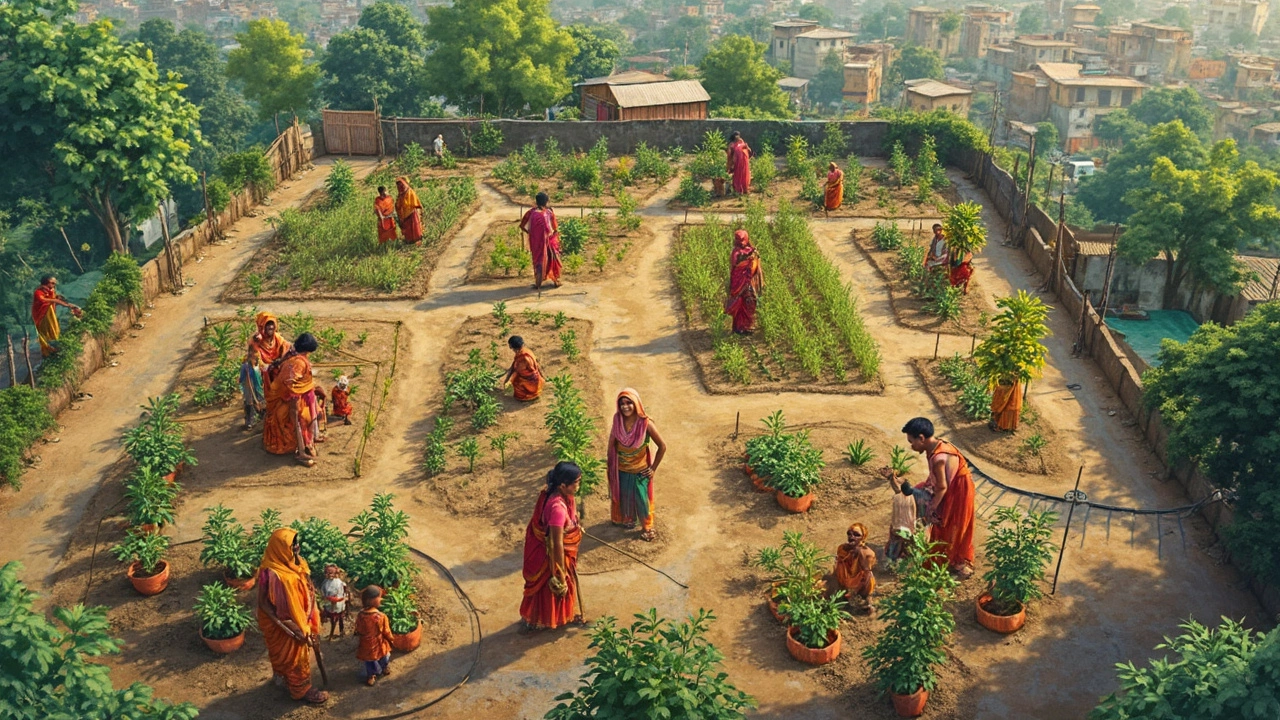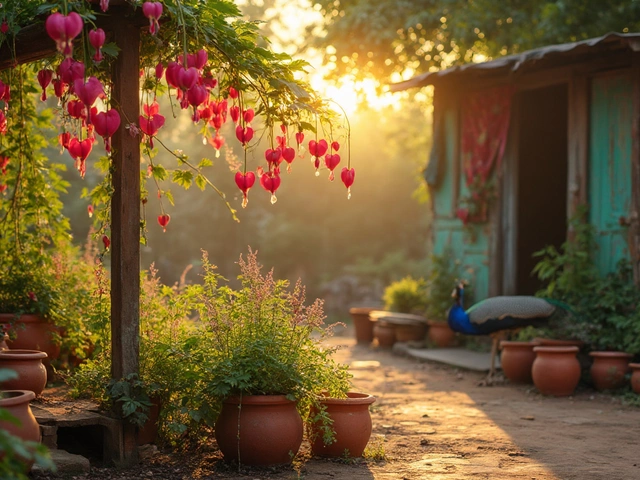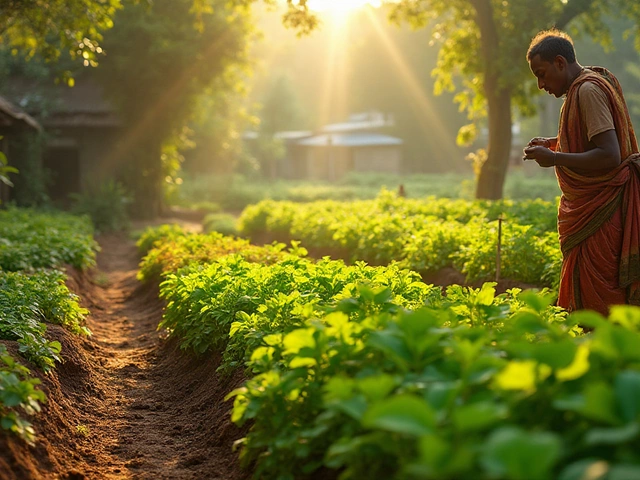Picking an irrigation system isn’t just about watering your plants. It’s about making sure you don’t end up throwing cash away every month. Drip irrigation has a rep for being the most budget-friendly option, but there are a few things regular folks don’t always hear before spending hundreds at the hardware store.
Let’s talk basics: Drip irrigation slowly delivers water right to the roots. That means less wasted water and smaller water bills. But the real trick is figuring out which setup keeps your upfront costs low, doesn’t require constant repairs, and won’t drive you nuts when something goes wrong.
There’s a big difference in price between a basic DIY drip kit from the garden aisle and a pro setup with fancy features. If you just want to keep your veggies alive and avoid dragging a hose around, you don’t need to go high-end. Simple soaker hoses or basic drip lines are surprisingly cheap. You can even rig your own with plastic tubing and a little patience—something my son Rohan and I have done more than once.
- What Makes an Irrigation System 'Affordable'?
- Basic Drip Irrigation: The Cost Breakdown
- Pressure Compensating vs. Non-Compensating Drip Lines
- Ways to Cut Costs Without Sacrificing Results
What Makes an Irrigation System 'Affordable'?
Affordability is not just about the price tag you see at checkout. To really know if an irrigation system is affordable, you have to look at the whole picture: what you pay upfront, what you spend each season, and how much time or hassle it takes to keep the thing running. There's no sense in buying the cheapest set-up if it breaks down after a year, or if it runs up your water bill every summer.
Let’s break down what “affordable” usually comes down to:
- drip irrigation system price: What you pay for the kit or supplies—pipes, emitters, timers, and fittings.
- Installation: Are you paying a pro, or is it DIY with a few hours on a Saturday?
- Water Efficiency: How much water does it save compared to just using a sprinkler or soaker hose?
- Maintenance: How often will you have to replace drip lines, fix leaks, or unclog emitters?
- Longevity: How many seasons will the parts actually last if you treat them right?
The hidden costs can sneak up fast if you aren’t careful. A cheap hose might seem like a steal but split open after a hot summer. On the other hand, a well-chosen drip system can save up to 50% of water compared to sprinklers, and that translates directly to lower bills. Here’s a straight-up look at typical costs for different systems in a backyard garden (about 500 sq ft):
| System | Upfront Cost ($) | Yearly Maintenance ($) | Avg. Water Saved (%) |
|---|---|---|---|
| Drip Kit (DIY) | 60–120 | 10–25 | 30–50 |
| Soaker Hose | 25–40 | 20–30 | 10–20 |
| In-Ground Sprinkler | 300–700 | 40–80 | 0 |
Affordability means picking what avoids unnecessary future spending. For most home gardeners, a basic DIY drip setup nails the balance between price, water savings, and needing fewer repairs. That’s what puts it at the top of the list for bang-for-your-buck watering.
Basic Drip Irrigation: The Cost Breakdown
If you’re wondering where your money actually goes with drip irrigation, let’s break it down, dollar by dollar. The main costs are the starter kit, tubing, emitters (the small things that drip out water), connectors, a filter, and a pressure regulator. Most home gardeners start with a kit covering about 200 square feet, which runs $30 to $60 at big box stores. But, as you expand, extra tubing and emitters are cheap—about 10 to 20 cents per foot and 15 to 40 cents per emitter. Honestly, you can do a small veggie garden for under fifty bucks, especially if you skip the automated timer at first.
The best part about a drip irrigation system is you’re not paying for unused water. Instead of spraying everywhere, you’re sending water right where it’s needed. For a typical garden, this can mean saving up to 50% on your water bill compared to overhead sprinklers. The filter and pressure regulator together cost about $15 to $25, but they’re not optional—skipping them means headaches from clogged or blown-out drippers, trust me.
Here’s a real-world look at what you might spend setting up a small and a medium-sized garden:
| Item | Small Garden (200 sq ft) | Medium Garden (500 sq ft) |
|---|---|---|
| Starter Kit | $35 | $50 |
| Extra Tubing | $0 | $10 |
| Emitters & Connectors | $10 | $20 |
| Filter & Regulator | $20 | $20 |
| Timer (optional) | $20 | $20 |
| Total | $85 | $120 |
This is just the startup. Yearly costs for fixing leaks or swapping out clogged emitters are low—usually under $10 if you buy basic replacement parts. And because you’re not flooding your paths or watering weeds, your plants actually do better.
If you’re replacing an old sprinkler system, you might have some upfront labor to dig up buried pipes, but for most raised beds or garden rows, the install is simple. You’ll need scissors, basic hand strength, and maybe a bored kid to help push emitters in. Skip the expensive tools. The standard tubing is soft enough to work with your hands.

Pressure Compensating vs. Non-Compensating Drip Lines
Let’s clear up a question almost everyone has when shopping for drip irrigation: what’s the deal with pressure compensating (PC) and non-compensating (NC) drip lines? It’s not just a techy label. The choice impacts how evenly your plants get watered—and how much you’re spending on the whole system.
Pressure compensating drip lines have little gadgets inside (think flow regulators) that make sure each emitter puts out the same amount of water, even if the water pressure changes along the line. These are clutch when you’ve got a garden that stretches far or if the ground isn’t flat. You won’t end up with wilted tomatoes at one end and drowning carrots at the other.
Non-compensating drip lines are the basic version. No internal regulators—just holes poked in the tubing. The closer the emitter is to the start, the more water it gets, which can cause headaches if your rows are long or if your backyard slopes. But if you have a small, flat area and you want to save cash, NC lines might be just fine.
Here’s a quick look at the real numbers for both options:
| Type | Average Cost (per 100 ft) | Best For | Water Distribution |
|---|---|---|---|
| Pressure Compensating | $35–$55 | Large or uneven areas | Very even |
| Non-Compensating | $15–$25 | Small, flat gardens | Can be uneven |
So what’s the move? If you care about squeezing every last drop of value out of your drip irrigation system, PC lines are worth the extra bucks if your setup is complicated. For a quick, affordable fix in a small bed, non-compensating often does the trick—just keep those rows short.
- For rows under 50 feet and no hills, non-compensating lines usually work and save money.
- If you notice plants at the end aren’t getting enough water, that’s a sign you need pressure compensating lines.
- You can always mix and match—use PC lines for the tougher spots and cheaper lines where you can get away with it.
Bought the wrong type? No worries, you can swap out sections later without redoing the whole system. Just don’t overthink it—pick what matches your garden and budget best.
Ways to Cut Costs Without Sacrificing Results
No need to splurge on a bunch of extras—there are smart ways to get the benefits of drip irrigation without breaking the bank. Here’s what actually works, from someone who’s made every mistake possible.
- Drip irrigation only where you need it. Don’t bother running lines to areas that rarely get plants or get run-off anyway. Target veggie beds, small garden patches, and shrubs with separate tubing. You’ll save on hose and emitter costs.
- Go the DIY route when you can. Many hardware stores sell bulk tubing, connectors, and simple punch-in emitters. A basic toolkit can put together an entire garden system for under $60, compared to $200 for some ‘all-in-one’ kits.
- Reuse old parts. If you’re upgrading, keep all couplers, stakes, and even sections of tubing. Most of these pieces work with new setups, as industry standards keep parts pretty compatible.
- Stick to gravity-fed when possible. If you set up your water barrel or tank higher than your plants, gravity does most of the work—so you don’t need a pump or pressure regulator. Less hardware, fewer problems.
Basic math matters. Here’s what my own costs looked like versus my neighbor’s pro install two summers ago:
| Setup | Initial Cost | Annual Upkeep | Parts Lifespan (years) |
|---|---|---|---|
| DIY Kit (Manual) | $55 | $10 | 6-8 |
| Pro Install (Automatic) | $450 | $30 | 10 |
Manual setups are cheaper up front and for repairs—just check lines and drippers each spring for clogs or leaks. If a part cracks, swap it instead of buying all new. Watch for damage after mowing or from rambunctious kids. If you want to automate, add a timer later rather than starting with a full electrical system.
And here’s a trick: Mulch around your drip lines. Mulch keeps moisture in the soil and stops sun damage to the tubing, making it last even longer. I use whatever I’ve got—from wood chips to cardboard—and the tubes last years longer than when left bare.
You don’t need a fancy brand. Skip marketing hype, check local garden forums for real user opinions, and look for basic warranties. Plenty of budget-friendly parts get the job done, especially if you just want a healthy, green garden without spending a fortune.





